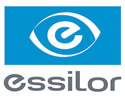
Sessão de Encontro com o Autor – Tema Livre (Pôster)
Código
P010
Área Técnica
Cirurgia Refrativa
Instituição onde foi realizado o trabalho
- Principal: Universidade federal do estado do rio de janeiro, UNIRIO
Autores
- THIAGO JOSE MUNIZ MACHADO MAZZEO (Interesse Comercial: NÃO)
- Bernardo Lopes (Interesse Comercial: NÃO)
- Nelson Batista Sena Jr (Interesse Comercial: NÃO)
- Pedro Manuel Luis Baptista (Interesse Comercial: NÃO)
- Renato Ambrósio Jr (Interesse Comercial: SIM)
Título
CORNEAL BIOMECHANICAL BEHAVIOR AND OUTCOME’S PREDICTABILITY IN RING SEGMENTS FOR KERATOCONUS
Objetivo
The variability in Intracornal ring segments implantation (ICRS) postoperative outcome may be partially related to cornea’s biomechanical behavior, thus, multivaried analysis could assist to create a possible correlation based on biomechanical parameters, providing more precision and refractive predictability in ICRS implantation. The objective of this study is to try correlate corneal tomographic and biomechanical aspects with both visual and refractive outcomes of ICRS surgery.
Método
This is an observational retrospective study, in which 32 eyes of 25 patients with Keratoconus (KC), aging from 15 to 42, were analyzed before and 6-months after ICRS implantation. The pre and postoperative comparative analysis included: distance visual acuity with and without correction, refractional error, corneal tomographic and biomechanical evaluation by Pentacam HR and Corvis ST.
Resultado
Considering all cases, there was a significant improvement of cylindrical refractive error (cyl), where median cyl value pre op was -4.625 and postop was -1.250. Visual acuity with (CC) and without correction (SC), converted to logarithm of minimal angle resolution (LogMAR) was also significantly better after ICRS implantation. The median preoperative value of LogMAR SC was 0.602 and 0.349 CC, whereas, these values were 0.301 and 0.096 6-months after ring implantation. There was a correlation between Improvement of visual acuity and biomechanical parameters, ranging from 0.693 to -0.036. A multivariate model is being constructed, aiming for enhancing accuracy for ICRS plan.
Conclusão
ICRS are effective for corneal modeling in keratoconus, but despite using advanced nomograms, visual and refractive unpredictable results still occurs. A better understanding of corneal biomechanical aspects in the planning of ICRS implantation, could help to achieve more predictable visual outcomes in these patients.
63º Congresso Brasileiro de Oftalmologia
4 a 7 de setembro de 2019 | Windsor Convention & Expo Center Barra da Tijuca | Rio de Janeiro | RJ | Brasil
ANVISA: 25352012367201880









